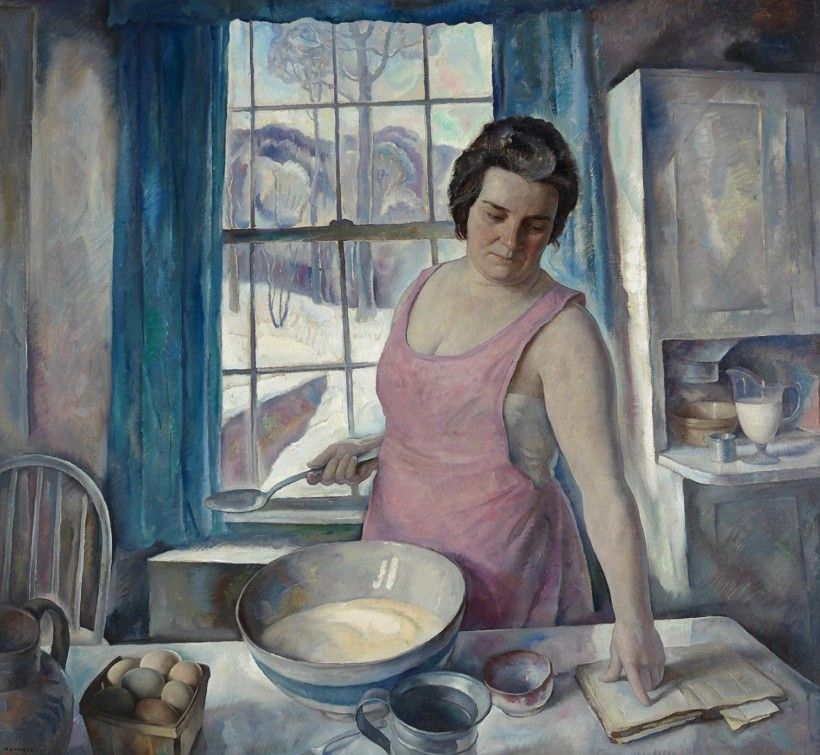Recipe by Liz Sempervive, Executive Chef of the Millstone Café

Over the past year you may have been someone who attempted to make bread from scratch. Kudos! Sourdough bread is no easy task, but it is well worth the effort. To make bread from scratch like this you need to use a “starter,” which is natural, fresh yeast. You mix together flour and water in certain amounts and every day you throw away about half of that mixture to feed it with fresh flour and water to continue to grow the yeast. That excess starter doesn’t always need to be tossed out though—you can actually utilize this “discard” in other recipes like pancakes. It adds a great tang to the flavor and extra bounce in the fluff. This recipe is a proven winner at my house. I use all the cast iron pans I have and make big, round, short stacks with lots of butter and syrup!
Ingredients
| 2 cups | all-purpose flour |
| 1 tsp | baking powder |
| 1 tsp | baking soda |
| 3 Tbs | sugar |
| 1 tsp | salt |
| 2 Tbs | sourdough starter discard |
| 2.5 cups | buttermilk (full fat type is best) |
| 2 | whole eggs |
| 3 Tbs | melted butter |
| As needed | extra oil or butter for the pan |
Directions
In a large mixing bowl, sift together the flour, baking powder and baking soda. Mix in the sugar and salt. Set this bowl aside. We will be adding the wet ingredients to the dry ingredients.
Next, melt the butter in one of the pans. Be sure to let the butter cool slightly before adding to the other wet ingredients (if the butter is too hot, it will scramble the eggs in the bowl). In another bowl, pour in the buttermilk, sourdough starter, eggs, and melted butter. Whip the wet ingredients until they are smooth.
Now, pour the wet ingredients all at once into the dry ingredients. You want to mix the batter the least amount as possible—don't overwork it! Start with the whisk and once it is about ¾ the way incorporated, switch to a wooden spoon or rubber spatula. Scrape the sides and bottom of the bowl so everything gets mixed enough. Some clumps are ok! Making the batter completely smooth is not. Let the batter sit for about 10 minutes while you prepare your pans.
To prepare your pans, place them on the stove and gently warm them up on low heat. It is important to have a well heated, heavy bottomed pan for pancakes. Spray your pans with cooking spray or add a teaspoon of butter or oil and wipe it around with a paper towel. Once the pans are prepared, use a ladle or a ½ cup dry measuring spoon to scoop the batter into the pan. Let the pancakes cook until you see bubbles appear and disappear from the raw side. Then, carefully, flip the pancake over to continue cooking. On the flip side, I always look to see the pancake rise, then fall slightly when they are done. Sometimes, I use a cake tester to see if the middle is done all the way. Apparently, raw batter is not good for you.
Once they are cooked, serve immediately with butter and whatever toppings you like on your pancakes! If you want to add berries or chocolate chips into the pancakes, add them once you have scooped the batter into the pan and the pancake is about ready to flip. You can keep the pancakes warm in the oven with it set to 200° F.
Liz Sempervive is the Executive Chef of the Millstone Café and Catering at the Brandywine River Museum of Art. She hopes to bring nourishment to everyone through her scratch cooking, classic dishes and rustic cuisine. Chef Liz is passionate about food accessibility and supporting our local food systems. She believes that collective healing begins with sharing a meal between friends. Her accomplishments include being awarded "Best New Chef, 2019" in Main Line Today magazine and participating as a contestant on Food Network’s Chopped.